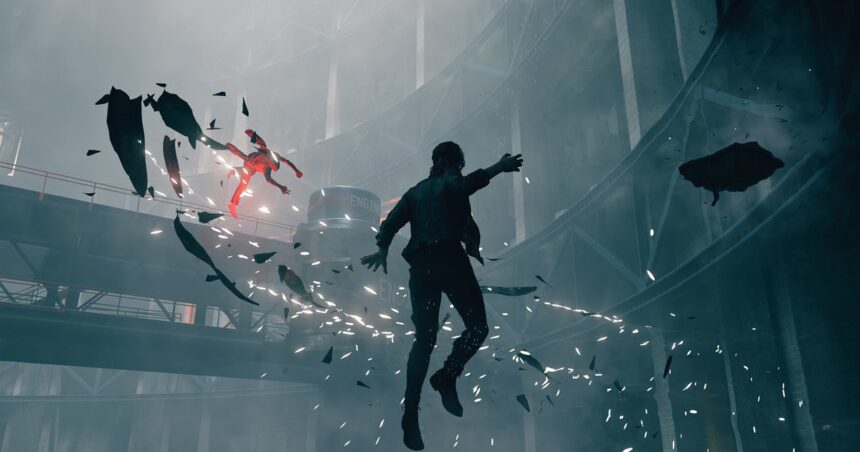The term “uncanny” evokes a fascinating blend of intrigue and discomfort, deeply embedded in diverse cultural contexts. Originating from the German word “unheimlich,” which translates to “unhomely,” the concept stirs primal anxieties by transforming the familiar into something unsettlingly foreign. Picture this: an environment that should evoke comfort, yet instead provokes a disquieting shiver—a hallmark of the uncanny experience.
A contemporary embodiment of this eerie sensation is found in the acclaimed video game “Control.” This third-person shooter intricately merges action, mystery, and psychological thrills, drawing inspiration from a rich tapestry of sources, including the enigmatic vibes of *The X-Files* and the intricate psychological undertones of *House of Leaves*. Players are inducted into a world of unsettling familiarity where the ordinary morphs into the eerie, making it a masterwork of immersive gaming.
Set against the backdrop of the Oldest House—an impossibly complex and sentient building—*Control* redefines home in gaming. While titles like *What Remains of Edith Finch* and *Maniac Mansion* explore residential themes, few rival the sprawling, mind-bending architecture of the Oldest House. This unique landscape doesn’t merely host the game; it unfolds an entire universe characterized by bizarre occurrences and surreal settings. Recently, Remedy Entertainment hinted at the development of a new multiplayer action venture titled “FBC: Firebreak,” which will also navigate the architectural enigma of the Oldest House, highlighting the vast potential for new narratives within its walls.
In the lore of *Control*, the Oldest House serves as the headquarters for the Federal Bureau of Control, a secretive agency dedicated to unsolved phenomena. The architectural space artfully blends mid-century modern design with surreal elements, meticulously crafted to elicit a hauntingly beautiful experience—realistic wooden finishes, tactile tile textures, and tranquil foliage illuminated by ghostly light create a striking contrast. This discord between polished aesthetics and underlying chaos fosters a captivating tension that keeps players in a state of constant intrigue.
You step into the shoes of Jesse Faden, whose primary goal is to locate her abducted brother. This storyline anchors the player amidst a swirl of bizarre occurrences. Your journey involves wielding a shape-shifting weapon, capable of taking on various forms, alongside utilizing telekinesis to manipulate your environment. The game’s mechanics reveal an unexpected order amidst chaos, allowing players to feel grounded in an otherwise erratic world. Like robust supports in a skyscraper, *Control* constructs its wild creativity upon a solid narrative base that never loses sight of the player’s purpose.
As players traverse the Oldest House, the narrative serves more as an exploration vehicle than a mere linear quest. The building itself shifts and warps in subtle but profound ways. Hallways elongate, signage feels slightly askew, and the technology embodies retro-futuristic elements reminiscent of the Space Race. All of these elements contribute to an eerie atmosphere that envelops players, challenging their perceptions. Soon, rooms morph dramatically, reflecting the unsettling essence that permeates the space. The Oldest House delights in its surreal architecture, featuring halls that curve unexpectedly and rooms that defy logic.
Notably, the Oldest House embodies a balance of chaos and tranquillity. Environmental transformations occur at a deliberate pace, allowing players to regain their bearings while confronting disorientation. After frenetic moments, silence can reign, prompting players to reconsider their surroundings: Was this space always here? Did that corridor always look this way?
Before the game dives fully into sci-fi territory, this architectural marvel engages players with its vibrant designs, especially during climactic sequences loaded with audiovisual stimulation. Yet it’s the humorous interludes—like offices cluttered with colorful Post-its—that leave a lasting impression. These absurd yet relatable scenarios bridge the uncanny with the mundane, unleashing humor that demonstrates how whimsical oddities can coexist in daily life.
This clever blending of levity sets *Control* apart from other narrative-driven games that dabble in office-based humor. Rather than adopting the ironic quips typical of titles like *Portal*, which highlights the absurdity of structured settings, *Control* employs a sensitive lens. It unveils the unsettling peculiarities of office life through a supernatural lens, illuminating humanity’s frailties and quirks. The game showcases a tapestry of surreal snapshots—whether it’s the excessive use of stationery or the bizarre connections between banal tasks and strange occurrences.
Transformation extends to players as they engage a plethora of foes and wield a potent array of supernatural abilities. While the gunplay offers entertainment value, it’s the telekinetic powers that truly shine, allowing you to launch objects with exhilarating finesse. This destructible environment turns everyday office supplies into weapons of chaos, captivating players as they see textures rupture and dissipate under duress. Engaging the environment in *Control* transcends mere combat; it’s about dismantling the very structures that seek to confine you. Many players find themselves spellbound, often opting to unleash their destructive powers on inanimate objects, entranced by the way surfaces yield and crumble.
The aesthetic appeal of *Control* isn’t merely in its visuals. The moments of violent interaction craft stunning imagery; craters formed by gunfire become fascinating art pieces, evoking a sense of beauty in transience and destruction. This poignant commentary reflects back on the uncanny, forcing players to confront the absurdity of their actions and the hidden beauty nestled within disorder.
While there’s an abundance more to explore within *Control*, the game’s uncanny elements unfurl in numerous ways, mirroring our emotions, fears, and even humor. It rises above traditional entertainment, offering a profound psychological experience that resonates long after you leave the Oldest House behind—its allure firmly rooted in the unfathomable depths of a seemingly unending mystery.





















